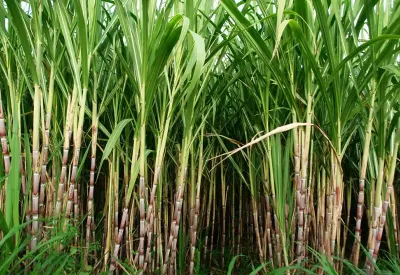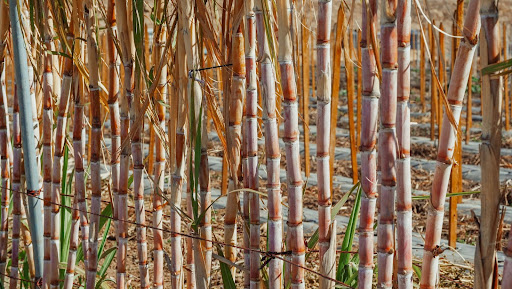The Relevance of Sugar Beet Vs Sugar Cane: a Closer Consider Their Manufacturing Processes and Applications
The significance of sugar beet and sugar cane extends past their role as sources of sucrose. Each plant includes distinctive manufacturing procedures that affect their applications throughout different industries. While sugar beet sustains not just food production but also biofuels and fertilizers, sugar cane primarily serves the food industry with useful byproducts. Recognizing these differences reveals how each plant shapes agricultural economic situations and market methods globally, motivating additional expedition into their distinct contributions.

Summary of Sugar Beet and Sugar Cane
Sugar beet and sugar cane are two key sources of sucrose, each with distinctive characteristics and cultivation methods. Sugar beet, an origin vegetable, thrives in temperate climates - Sugar beet vs sugar cane. It is grown mostly in the North Hemisphere and requires well-drained dirt. The plant commonly expands to a height of concerning 18 inches, with a white, fleshy root consisting of concerning 15-20% sucrose. On the other hand, sugar cane is a tropical yard that flourishes in cozy, moist problems. It can reach heights of up to 12 feet and includes high, jointed stems that store sucrose concentrations ranging from 10-15%. The growing of sugar cane is labor-intensive and usually entails manual harvesting. Both crops serve as vital agricultural commodities, giving resources for sugar production and various by-products. Their growing practices considerably influence neighborhood economic situations and global sugar markets, making them integral to the farming landscape
Collecting Strategies for Sugar Beet and Sugar Cane
Collecting methods for sugar beet and sugar cane differ considerably because of the one-of-a-kind qualities of each plant. Sugar beet harvesting generally utilizes specialized equipment referred to as beet farmers, which effectively uproot the beetroots from the dirt while reducing damages. These equipments utilize a series of blades to reduce the tops and lift the roots, making sure that the beets remain intact for processing.In comparison, sugar cane harvesting commonly includes 2 key methods: hand-operated cutting and mechanical harvesting. Manual harvesting, still prevalent in some regions, needs workers to cut the cane stalks by hand making use of machetes. This method permits for selective harvesting but is labor-intensive. Mechanical harvesters have gained popularity, utilizing revolving blades to reduce and gather the stalks swiftly. Both approaches intend to enhance yield and high quality, with mechanical harvesting progressively taken on to meet rising production needs effectively.
Handling Techniques for Sugar Beet
After being collected, sugar beetroots undergo a collection of processing steps to extract sucrose efficiently. The very first step involves washing the beetroots to get rid of dirt and contaminations. Next, the beetroots are sliced right into thin strips referred to as cossettes, which boosts the surface area for removal. These cossettes are after that based on warm water extraction in a diffusion procedure, permitting sucrose to liquify right into the water.Following extraction, the juice includes impurities and is clarified making use of lime and warmth to speed up solids. The cleared up juice is then focused with evaporation, removing excess water and raising sugar focus. To crystallize the sucrose, the focused juice goes through further evaporation and air conditioning, developing sugar crystals. These crystals are separated from the remaining syrup via centrifugation, dried, and packaged for circulation. This method ensures a high yield of sucrose while keeping the high quality of the final item.
Processing Methods for Sugar Cane
Handling sugar cane includes a collection of actions developed to draw out sucrose properly. The procedure begins with harvesting, where fully grown sugar cane is cut and carried to refining facilities. As soon as at the mill, the cane undergoes cleaning to remove contaminations. The next action is crushing, where mechanical rollers essence juice from the coarse stalks.This juice is then made clear using warm and lime to remove put on hold solids and impurities. Complying with explanation, the juice is evaporated to concentrate the sugar material, here resulting in a thick syrup. The syrup goes through crystallization, where sugar crystals develop as the syrup cools down. These crystals are separated from the staying molasses through centrifugation.Finally, the sugar is dried and packaged for circulation. This thorough processing approach guarantees that sugar cane produces a premium item, suitable for different cooking and commercial applications, while maximizing the extraction of sucrose from the raw material.
Nutritional Differences Between Sugar Beet and Sugar Cane
The contrast in between sugar beet and sugar cane extends beyond their processing approaches to incorporate significant nutritional differences. Sugar beet consists of not just sucrose yet additionally a series of nutrients, including vitamin C, potassium, and magnesium. These nutrients contribute to its possible health benefits, such as sustaining immune feature and maintaining electrolyte balance. In comparison, sugar cane mostly gives sucrose with very little degrees of necessary nutrients.Additionally, sugar beet has a greater fiber web content, which can assist in food digestion and advertise satiation. The visibility of anti-oxidants in sugar beet might Read More Here additionally supply protective effects against oxidative tension, a factor connected to different persistent illness. While both resources are mostly made use of for sugar production, the nutritional accounts recommend that sugar beet might use extra health and wellness advantages compared to sugar cane. This distinction is essential for consumers seeking greater than simply sweeteners in their diets.
Applications of Sugar Beet in Various Industries
A range of markets leverage sugar beet for its versatile applications beyond sugar production. In the food industry, sugar beet offers as a crucial component in producing numerous refined foods, including sugary foods and baked items, as a result of its natural sweet taste. In addition, the pulp originated from sugar beet is made use of as pet feed, offering a nutrient-rich resource for livestock.In the biofuel sector, sugar beet is progressively acknowledged for its capacity in producing bioethanol, adding to renewable resource services. The farming field gain from sugar beet's results, which can be utilized as natural fertilizers, enhancing dirt health and wellness and fertility.Furthermore, sugar beet essences are employed in drugs and cosmetics, where they work as natural sugar and humectants. These diverse applications highlight sugar beet's role as a useful resource in improving sustainability and innovation throughout multiple sectors, reinforcing its relevance in modern manufacturing methods.
Applications of Sugar Cane in Various Industries

Often Asked Inquiries
What Environmental Effects Are Connected With Sugar Beet and Sugar Cane Production?
The ecological influences of sugar beet and sugar cane manufacturing consist of soil degradation, water use, pesticide application, and habitat interruption. These aspects add to environmental inequalities, increasing concerns regarding sustainability in farming Web Site techniques connected with both plants.

Just How Do Sugar Beet and Sugar Cane Contrast in Regards To Economic Practicality?
The financial feasibility of sugar beet and sugar cane varies based on variables like geographic location, production expenses, and market demand - Sugar beet vs sugar cane. Both crops use special advantages, affecting farmers' decisions regarding farming and investment in various regions
What Are the Main Regions for Sugar Beet and Sugar Cane Cultivation?

How Does Climate Impact the Growth of Sugar Beet and Sugar Cane?
Environment considerably impacts the development of sugar beet and sugar cane. Sugar beets thrive in cooler temperature levels, while sugar cane requires warm, exotic conditions. Sugar beet vs sugar cane. Both plants rely on appropriate rains and sunlight for suitable advancement and yield
Exist Any Type Of Substantial Wellness Concerns Connected To Consuming Sugar From These Resources?
Wellness concerns pertaining to sugar intake consist of obesity, diabetes, and heart problem. Both sugar beet and sugar cane-derived sugars can contribute to these problems, specifically when eaten in too much quantities, regardless of their source.
Comments on “What the research says about sugar beet vs sugar cane in climate resilience”